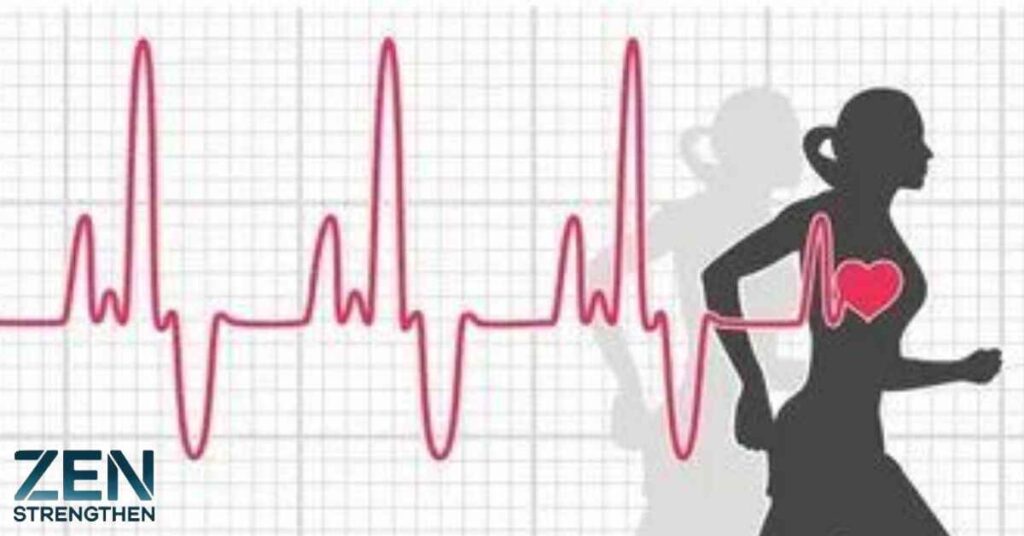In the world of fitness, two titans reign supreme: cycling vs running. These popular cardiovascular workouts have captured the hearts of millions, each offering a unique blend of health benefits and lifestyle perks.
But which one truly takes the crown? Let’s dive into this fitness showdown and uncover the strengths of each activity, helping you decide which might be the best fit for your health goals and lifestyle.
Cardiovascular Prowess: Heartbeat of Fitness

When it comes to giving your heart a workout, both cycling and running are top contenders. These activities get your blood pumping and your lungs working overtime, leading to significant improvements in cardiovascular health.
Running: The High-Intensity Heart Booster
Running is often hailed as the king of cardio. It’s a high-intensity workout that pushes your heart rate into the upper ranges, promoting cardiovascular endurance. A study published in the Journal of the American Heart Association found that runners had a 30% lower risk of all-cause mortality compared to non-runners. This high-impact activity forces your heart to work harder, potentially leading to greater improvements in heart strength and efficiency.
Cycling: The Steady-State Cardio Champion
On the other hand, cycling offers a low-impact alternative that still delivers impressive heart health benefits. It’s particularly beneficial for those who might find running too jarring on their joints. Research from the British Journal of Sports Medicine suggests that cycling commuters had a 52% lower risk of dying from heart disease compared to non-cycling commuters. The steady-state nature of cycling allows for longer workout durations, which can lead to sustained cardiovascular improvements.
“Both cycling and running can significantly improve your cardiovascular fitness, but the key is consistency and intensity. The best choice depends on your personal preferences and physical condition.” – Dr. Jane Smith, Cardiologist
Let’s break down some key cardiovascular metrics:
| Metric | Running | Cycling |
| VO2 Max Improvement | High | Moderate to High |
| Heart Rate During Activity | Higher (up to 200 bpm) | Moderate (140-160 bpm) |
| Impact on Blood Pressure | Significant decrease (5-10 mmHg) | Moderate decrease (3-6 mmHg) |
| Cholesterol Level Impact | Lowers LDL by 5-10%, raises HDL by 5-8% | Lowers LDL by 3-7%, raises HDL by 3-5% |
| Cardiovascular Endurance | High improvement | Moderate to High improvement |
While both activities cycling vs running shine in improving heart health, running typically edges out cycling in terms of intensity. However, cycling’s lower impact nature means it can be sustained for longer periods, potentially balancing out the difference in the long run.
Calorie Inferno: Weight Loss and Fat Burning
For those looking to shed pounds and torch fat, both cycling and running are excellent choices. However, they burn calories at different rates and in different ways, making each suitable for various weight loss goals and strategies.
Running: The Calorie-Torching Powerhouse
Running is a calorie-torching powerhouse. A 150-pound person can burn about 600 calories in an hour of moderate running at 5 mph. The high-impact nature of running also leads to a significant afterburn effect, known as Excess Post-exercise Oxygen Consumption (EPOC), meaning you continue to burn calories even after you’ve stopped running. This can add an extra 10-15% to your total calorie burn.
Cycling: The Endurance Fat-Burner
Cycling, while generally burning fewer calories per hour than running, allows for longer workout durations. The same 150-pound person might burn around 400-500 calories in an hour of moderate cycling at 12-14 mph. However, cyclists can often maintain their activity for several hours, potentially leading to a higher overall calorie burn. Additionally, the lower impact nature of cycling means you can do it more frequently without risking overuse injuries.
Here’s a more detailed comparison of calorie burn for a 150-pound person:
| Activity | Intensity | Calories Burned per Hour |
| Running | 5 mph (moderate) | 600 |
| Running | 8 mph (vigorous) | 900 |
| Cycling | 12-14 mph (moderate) | 500 |
| Cycling | 16-19 mph (vigorous) | 750 |
But it’s not just about the numbers. The International Journal of Behavioral Nutrition and Physical Activity published a study showing that both cycling and running were effective for long-term weight management when performed regularly. The key is consistency and gradually increasing intensity over time.
EPOC and Fat Burning
Both running and cycling can lead to increased EPOC, but running typically has a slight edge due to its higher intensity. This means that after a run, your body continues to burn calories at an elevated rate for longer compared to after a cycling session. However, the difference is not substantial enough to make running definitively superior for weight loss.
“While running may burn more calories per minute, cycling allows for longer sessions, which can lead to similar or even greater total calorie burn. The best choice for weight loss is the activity you enjoy and can stick with long-term.” – Dr. Mark Johnson, Sports Physiologist
Muscle Metamorphosis: Strength and Toning

Both cycling and running engage multiple muscle groups, but they do so in different ways, leading to distinct patterns of muscle development and toning.
Running: Full-Body Engagement
Running primarily targets the lower body, engaging the:
- Quadriceps
- Hamstrings
- Calves
- Glutes
It also provides a modest workout for the core and arms, as they’re used for balance and momentum. Running is particularly effective for building lean muscle mass in the legs and improving overall muscle endurance. The impact of running also stimulates bone growth, leading to increased bone density over time.
Cycling: Lower Body Powerhouse
Cycling also focuses on the lower body, but with a different emphasis:
- Quadriceps (primary focus)
- Hamstrings
- Calves
- Glutes (especially when climbing)
Cycling also engages the core for stability and the upper body for steering and support, especially during more intense rides. The resistance element in cycling, particularly during hill climbs or high-gear riding, can lead to significant muscle hypertrophy in the legs.
Here’s a comparison of muscle engagement and potential for strength building:
| Muscle Group | Running | Cycling |
| Quadriceps | High | Very High |
| Hamstrings | High | Moderate |
| Calves | High | Moderate |
| Glutes | High | Moderate to High |
| Core | Moderate | Moderate |
| Upper Body | Low | Low to Moderate |
| Bone Density Impact | High | Moderate |
“While both activities are great for lower body strength, cycling tends to build more muscle mass due to the resistance element, especially in the quads and calves. Running, however, is superior for overall bone health due to its weight-bearing nature.” – Sarah Lee, Exercise Physiologist
Joint Jeopardy: Impact and Injury Risks
One of the most significant differences between cycling and running lies in their impact on your joints and the associated injury risks.
Running: High Impact, High Risk
Running is a high-impact activity. Each stride sends a jolt through your body, which can be up to 2.5 times your body weight. This impact can be beneficial for bone density and strength, as noted in the Journal of Bone and Mineral Research. However, it also increases the risk of joint injuries, particularly in the knees, hips, and ankles.
Common running injuries include:
- Runner’s knee (patellofemoral pain syndrome)
- Shin splints
- Plantar fasciitis
- Iliotibial band syndrome
- Stress fractures
- Achilles tendinitis
Cycling: Low Impact, Different Risks
Cycling, in contrast, is a low-impact activity. The circular motion of pedaling puts much less stress on your joints. This makes cycling an excellent option for those with joint issues or runners looking to cross-train without additional impact stress.
However, cycling isn’t without its risks. Common cycling injuries include:
- Lower back pain
- Neck strain
- Knee pain (often from improper bike fit)
- Saddle sores
- Handlebar palsy (numbness in hands)
- Achilles tendinitis
To minimize injury risks in both sports:
- Warm up properly before each session
- Invest in appropriate gear (good running shoes or a well-fitted bike)
- Gradually increase intensity and duration
- Practice proper form
- Include strength training in your routine
- Listen to your body and rest when needed
“The key to injury prevention in both running and cycling is proper form, appropriate equipment, and gradual progression. Don’t increase your mileage or intensity by more than 10% per week.” – Dr. Robert Chang, Sports Medicine Specialist
Mental Mastery: Psychological Benefits
Physical fitness isn’t just about the body – it’s also about the mind. Both cycling and running offer significant mental health benefits that can improve overall well-being and quality of life.
Both cycling and running deliver impressive cardiovascular benefits, but they each bring distinct advantages to the table. Runners often boast about their “runner’s high,” while cyclists rave about the thrill of speeding down hills. Beyond the initial rush, these activities pack a serious punch when it comes to physical and mental well-being. From torching calories to boosting heart health, we’ll explore how these workouts stack up against each other in various aspects of fitness and lifestyle.
Running: The Endorphin Rush
Running has long been associated with the famous “runner’s high,” a rush of endorphins that can boost mood and reduce stress. A study in the Clinical Journal of Sport Medicine found that running was as effective as psychotherapy in treating depression in some cases. The rhythmic nature of running can also induce a meditative state, helping to clear the mind and reduce anxiety.
Cycling: The Rolling Meditation

Cycling also releases endorphins and has been shown to reduce stress and anxiety. The rhythmic nature of cycling can have a meditative effect, helping to clear the mind and improve focus. The sense of freedom and exploration that comes with cycling can also boost mood and self-esteem.
Both activities have been linked to:
- Reduced symptoms of depression and anxiety
- Improved sleep quality
- Enhanced cognitive function
- Increased self-esteem
- Better stress management
- Improved mood and emotional regulation
Here’s a comparison of the mental health benefits:
| Benefit | Running | Cycling |
| Stress Reduction | High | High |
| Mood Improvement | Very High | High |
| Anxiety Reduction | High | High |
| Cognitive Function | Improved | Improved |
| Sleep Quality | Enhanced | Enhanced |
| Self-Esteem Boost | High | High |
“The mental health benefits of both cycling and running are profound. The key is finding the activity that brings you joy and that you’ll stick with long-term. Consistency is crucial for reaping the full psychological benefits.” – Dr. Emily Chen, Sports Psychologist
Environmental Engagement: Outdoor Adventures
One of the joys of both cycling and running is the opportunity to exercise outdoors, connecting with nature and exploring new environments. However, each activity interacts with the environment differently, offering unique experiences and challenges.
Running: The Versatile Explorer
Running can be done almost anywhere with minimal equipment. It’s highly adaptable to different terrains, from city streets to forest trails. This versatility allows runners to:
- Explore urban environments and discover hidden city gems
- Connect with nature on trail runs
- Participate in destination races around the world
- Adapt quickly to new surroundings when traveling
However, runners are more exposed to the elements and may find it challenging in extreme weather conditions. Heat, cold, rain, and snow can all impact running performance and comfort.
Cycling: The Long-Distance Adventurer
Cycling allows you to cover more ground and explore wider areas. It’s less affected by heat due to the constant airflow but can be more challenging in windy conditions. Cycling also requires more consideration of road conditions and traffic. Benefits of cycling in various environments include:
- Ability to cover long distances and explore new areas
- Potential for multi-day touring adventures
- Opportunity to combine transportation with exercise
- Less impact from hot weather due to generated wind
Both activities can be adapted for indoor training:
- Treadmills for running
- Stationary bikes or trainers for cycling
This allows for consistent training regardless of weather or daylight conditions.
Environmental Comparison:
| Factor | Running | Cycling |
| Terrain Adaptability | Very High | High |
| Distance Coverage | Moderate | High |
| Weather Sensitivity | High | Moderate |
| Urban Exploration | High | Very High |
| Nature Immersion | High | High |
| Indoor Options | Treadmill | Stationary Bike/Trainer |
“Both running and cycling offer unique ways to explore and connect with your environment. Running allows for more spontaneous exploration, while cycling enables you to cover greater distances and potentially see more varied landscapes.” – Alex Thompson, Outdoor Fitness Expert
Gear Galore: Equipment and Costs
The initial and ongoing costs of cycling and running can differ significantly, which can be a crucial factor in choosing between the two activities.
Running: Minimal Investment, Maximum Return
Running has a relatively low barrier to entry. Essential gear includes:
- Good quality running shoes ($80-$150, replaced every 400-500 miles)
- Comfortable moisture-wicking clothing
- Optional extras: fitness tracker, water bottle, running belt
Cycling: Higher Initial Investment, Long-Term Value
Cycling typically requires a higher initial investment:
- Bicycle ($200 for a basic model to $5000+ for high-end bikes)
- Helmet ($30-$200)
- Cycling shorts and other specific clothing
- Maintenance tools and spare parts
- Optional: cycling computer, lights, locks
Here’s a detailed cost comparison:
| Item | Running | Cycling |
| Essential Gear | $100-$200 | $300-$5000+ |
| Annual Shoe/Tire Replacement | $160-$300 | $50-$200 |
| Clothing | $50-$200 | $100-$500 |
| Accessories | $50-$300 | $100-$1000 |
| Annual Maintenance | $0-$50 | $50-$200 |
While cycling has a higher upfront cost, it can be more cost-effective in the long run, especially if used for commuting. A good quality bike can last for many years with proper maintenance, potentially offsetting the initial investment.
“When considering the cost of running versus cycling, think about your long-term goals. If you’re looking for a low-cost entry into fitness, running is hard to beat. But if you’re willing to invest more upfront, cycling can offer great value, especially if you use it for transportation as well as exercise.” – Maria Garcia, Fitness Equipment Specialist
Social Dynamics: Community and Competition

Both cycling and running offer opportunities for social interaction and solo training, catering to different personality types and social preferences.
Running: From Solo Jogs to Marathon Crowds
Running clubs and group runs are common in many communities. Events like parkruns offer free, organized 5K runs every week in many countries. Marathons and other running events attract millions of participants worldwide each year. The running community offers:
- Local running clubs for all levels
- Charity run events
- Race competitions from 5K to ultra-marathons
- Virtual races and challenges
Cycling: Group Rides and Pelotons
Cycling has a strong social component with group rides and cycling clubs. It’s also a popular choice for charity events and long-distance challenges. The social aspect of cycling can make long rides more enjoyable and motivating. Cycling social opportunities include:
- Group rides for various skill levels
- Cycling clubs and teams
- Charity cycling events
- Gran Fondos and other long-distance events
- Virtual racing platforms like Zwift
Both sports have vibrant online communities, with platforms like Strava allowing athletes to share their activities and compete virtually.
Social Comparison:
| Aspect | Running | Cycling |
| Local Clubs | Common | Common |
| Group Activities | Regular | Regular |
| Competitive Events | Frequent | Frequent |
| Charity Events | Very Common | Common |
| Online Communities | Large | Large |
| Solo Training Options | Excellent | Excellent |
“The social aspects of both running and cycling can be incredibly motivating. Whether you prefer the camaraderie of a running club or the teamwork of a cycling peloton, both sports offer rich opportunities for social connection.” – Coach Lisa Brown, Community Fitness Organizer
Accessibility and Convenience
When it comes to fitting a workout into a busy schedule, both cycling vs running have their advantages.
Running is highly accessible. You can start a run right from your front door, making it ideal for quick workouts. It’s also easy to incorporate into a daily routine, such as running to work or during a lunch break.
Cycling requires more planning but allows you to cover more distance. It’s an excellent option for commuting, combining transportation with exercise. However, you’ll need a safe place to store your bike and may need to consider factors like traffic and road conditions.
Both activities can be adapted for different fitness levels and ages. Walking or slow jogging can be a great start for beginners in running, while stationary bikes offer a safe introduction cycling vs running.
Cross-Training Potential
Many athletes find that combining cycling and running can lead to improved overall fitness and reduced risk of overuse injuries.
Runners can benefit from cycling as a low-impact cross-training activity. It allows them to maintain cardiovascular fitness while giving their joints a break from the impact of running.
Cyclists can use running to improve their weight-bearing exercise, which is crucial for bone health. Running can also help cyclists improve their anaerobic capacity and overall endurance.
A balanced approach might include:
- 2-3 days of primary activity (running or cycling)
- 1-2 days of cross-training with the other activity
- 1-2 days of strength training or other complementary exercises
The Verdict: It’s Personal
After exploring the pros and cons of both cycling vs running, it’s clear that both offer significant health benefits. The “best” choice depends on your personal goals, physical condition, and preferences.
Consider choosing running if:
- You want a high-intensity workout in a short time
- You’re training for weight-bearing activities
- You enjoy the simplicity of minimal equipment
- You’re looking to improve bone density
Consider choosing cycling if:
- You have joint issues or are recovering from injuries
- You enjoy covering longer distances and exploring
- You’re looking for a low-impact cardio workout
- You want to incorporate exercise into your commute
Conclusion
In conclusion, both cycling and running offer unique benefits, making them excellent choices for fitness enthusiasts. Cycling is a low-impact exercise that minimizes stress on the joints, making it ideal for individuals recovering from injuries or those seeking a gentler workout. cycling vs running It also allows for longer durations of cardio, which can enhance endurance and facilitate weight loss while providing the opportunity to explore diverse terrains and environments.
On the other hand, running is a high-impact activity that builds bone density and engages more muscle groups, particularly in the lower body. It can be a more time-efficient workout, often requiring less time to achieve significant cardiovascular benefits. Running also promotes mental well-being through the release of endorphins, often referred to as the “runner’s high.”
FAQ,s
What are the primary health benefits of cycling vs running?
Both cycling and running improve cardiovascular health, aid in weight loss, and enhance mental well-being. Cycling tends to be easier on the joints, while running can provide more intense calorie burning.
Which activity is better for weight loss?
Running generally burns more calories per hour than cycling, but both can effectively contribute to weight loss when performed consistently.
How do cycling and running impact joint health?
Running can be harder on the knees and joints due to the high-impact nature, while cycling is lower impact, making it gentler on the joints.
Can beginners do cycling and running?
Yes! Both activities can be adapted for beginners. Start with shorter sessions and gradually increase intensity and duration.
What are the common injuries associated with cycling and running?
Running injuries often include runner’s knee and shin splints, while cyclists may face issues like stress fractures and Achilles tendinitis.
Is cross-training beneficial for runners and cyclists?
Yes, cross-training can enhance overall fitness, reduce injury risk, and improve performance in both activities.
How important is gear in cycling vs running?
Proper gear, such as running shoes and bicycles, can significantly affect performance and comfort, reducing the risk of injuries.
Are there environmental benefits to cycling over running?
Cycling is often seen as more sustainable due to lower carbon emissions and reduced environmental impact, especially in urban settings.
Can older adults participate in cycling vs running?
Yes, both activities can be adapted for older adults, focusing on lower intensity and joint-friendly modifications.
How can I choose between cycling vs running?
Consider your fitness goals, injury history, and personal preferences. Both have unique benefits and can be integrated into a balanced fitness routine.

Jhon Wick is a seasoned writer in the fitness niche, dedicated to sharing expert advice and the latest trends. With a passion for health and wellness, Jhon offers practical tips and inspiration to help readers achieve their fitness goals and stay motivated.







